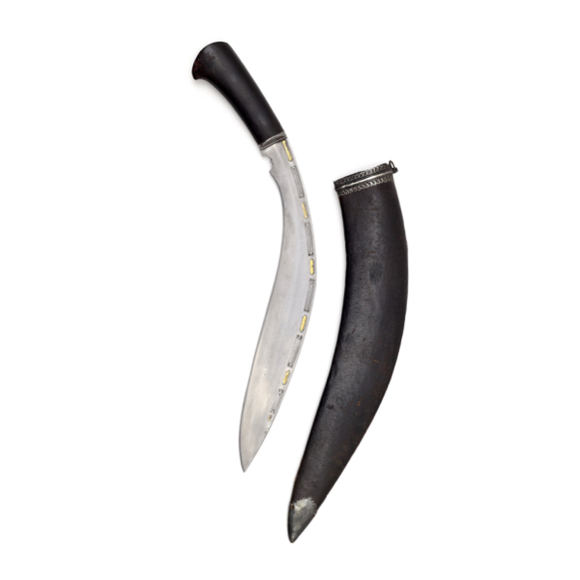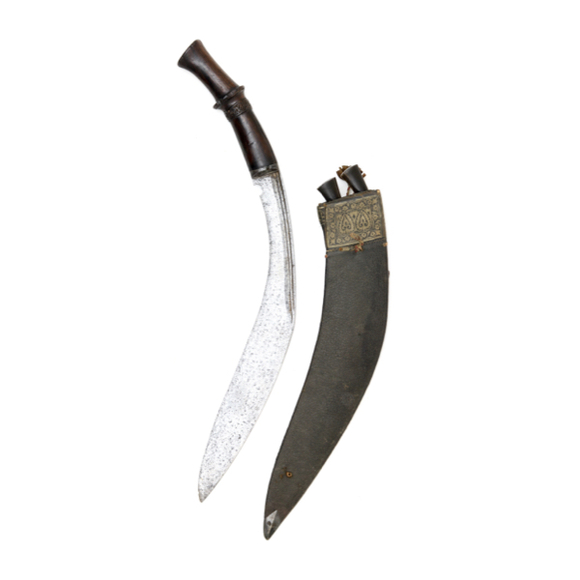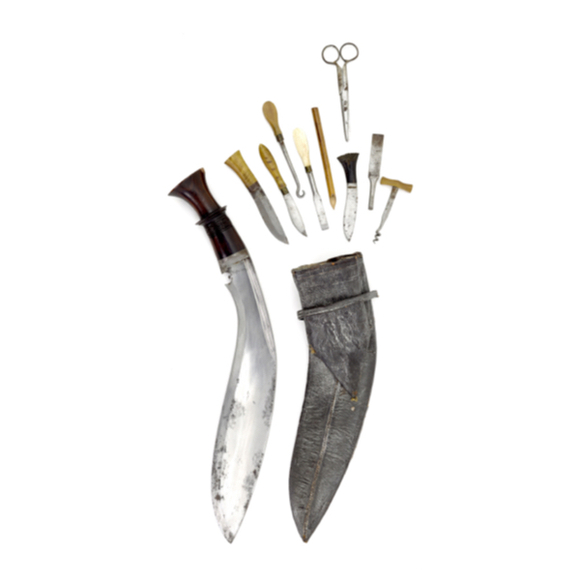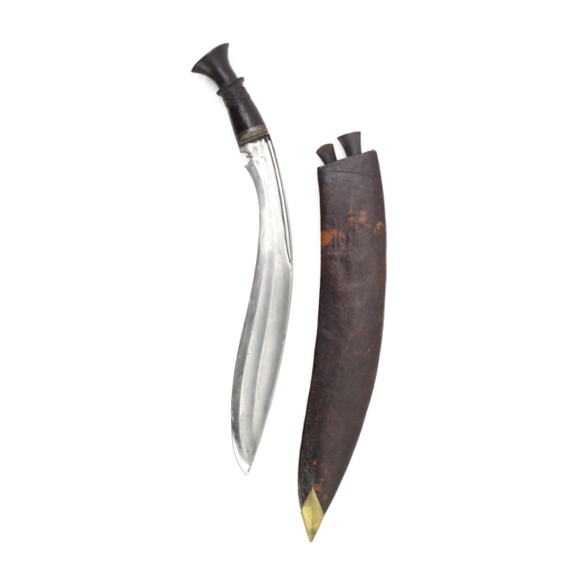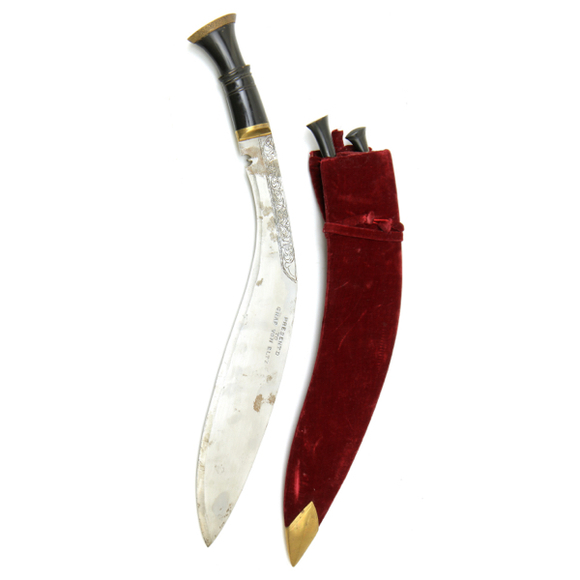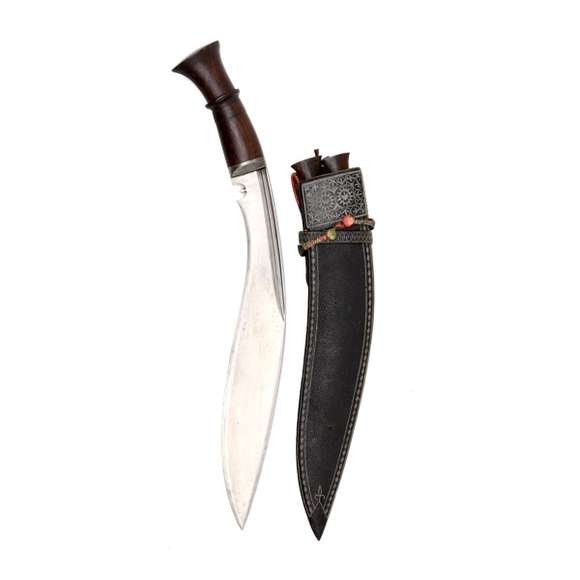With a very fine Nepalese blade, but kard-like hilt and scabbard.

42.2 cm
31.5 cm
Base 7 mm
Thickest 9 mm
(Right before "shoulder")
Middle 7.5 mm
5 cm from tip 5.5. mm
Narrowest at base 31 mm
Widest at belly 58 mm
505 grams
11.7 cm from hilt
Nepal. Probably made in India.
Iron, steel, wood, brass, bone, leather
Probably 1930s - 1940s
From a European private collection
Description
A medium-sized khukurī with some unusual features.
Pommels on khukurī are usually made out of the same material as the rest of the hilt. Smetimes we see the combination of two natural materials, such as wood and ivory. In this case, the pommel is made of a piece of sheet brass that was joined on one side with a dovetail connection, the pommel plate being brazed on. The wooden part of the handle has lozenge shaped bone inlays.
The base of the blade has ornamental grooves and dimples that resemble the work done on very high-end khukurī of primarily the early to mid 19th century. On this example, the work is best described as "good from afar, but far from good."
But you can't blame a man for trying: Whoever did it was obviously charmed by these marvellous earlier khukurī, but lacked the time, skill or other resources to match that kind of work.

A khukurī with similarly decorated spine in the hands of a Gurkha soldier.
World War 2.
Condition
Blade has some damage from contact and corrosion. Scabbard open on one side. Pommel dented. It is what it is. See photos.
Conclusion
Despite the indifferent workmanship on the attempts of decoration, the piece has a sturdy blade, handles nicely and is by all means a functional khukurī.










Early type with very shallow notch in the blade and little flare in the pommel.
20th century military khukurī with many different tools in its back pocket.
Very large presentation kukri from the Sundarijal Arsenal in Nepal.
An understated, elegant khukuri of substantial proportions with fine layered blade.

